Obento Chess
This large chess variant is the fruit of a collaboration between Eric Silverman and Jean-Louis Cazaux. Silverman had the initial idea of blending elements of large shogis into a giant Western styled chess variant, with the incorporation of bent-riders such as the Osprey and the Ostrich. Both inventors selected the pieces together, and defined their promotions after some very animated discussions. They elaborated the name of the game as a pun, recalling the presence of bent-riders in a Japanese manner.
The setup and promotion rules have been fixed after numerous tests with the help of the AI AI tool (Silverman has coded tens of chess variants in AI AI).
Setup
The dozenal board of 12x12 squares is used for Obento Chess. Each side has 36 pieces positioned on the first three rows of each player.
- The 3rd row is occupied by 12 Pawns.
- The 2nd row has the King (g2), Queen (f2), Bishops (e2, h2), Marquis (d2, i2), Gold Pashtuns (c2, j2), Silver Pashtuns (b2, k2) and Rooks (a2, l2).
- On the 1st row there are Ostriches (a1, l1), Snakes (b1, k1), Wizards (c1, j1), Ships (d1, i1), Ospreys (e1, h1) and Wildebeests (f1, g1).
Black mirrors White's pieces.
Initial Setup:

Pieces
King: moves 1 step in any orthogonal or diagonal direction to an unattacked square. The King is in check if it is attacked by one or several enemy pieces. It is forbidden to play a move leaving one's King in check.
There is no castling in Terachess II. On its first move, the King may jump to a free square at two squares' distance. For instance, from f2, it can jump to d1, d2, d3, d4, e4, f4, g4, h4, h3, h2 or h1). It does not matter if the square jumped over is occupied or not; however, the jump is forbidden if that intermediate square is threatened by an enemy piece. When jumping like a Knight, at least one of the two intermediate squares must be free of threat (e.g., if jumping from f2 to h3, either g2 or g3 must not be under attack). The King's jump is not permitted if the King is in check. This rule, which was once prevalent in medieval European chess, replaces castling. Identical to Metamachy.
Queen: slides to any square along the file, the rank, or a diagonal on which it stands. Identical to standard chess.
Rook: moves to any square along the file or the rank on which it stands. Identical to standard chess (except there is no castling)
Bishop: slides to any square along a diagonal on which it stands. Identical to standard chess
Knight: a (2,1) jumper, it jumps to the opposite square of a 2x3 rectangle. No matter what the intermediate square contains. Identical to standard chess
Amazon: it combines the move of Queen and Knight. An old idea, used by Russians instead of the Queen in the 18th century.

Marshall: it combines the move of Rook and Knight. It can be found in many, many chess variants since Carrera, Bird, Capablanca and many others like Grand Chess or Seirawan Chess.

Cardinal: it combines the move of Bishop and Knight. It can be found in many, many chess variants since Carrera, Bird, Capablanca, Modern and many others like Grand Chess or Seirawan Chess.

Centaur: it is another compound piece that moves as a Knight or a non-royal King.
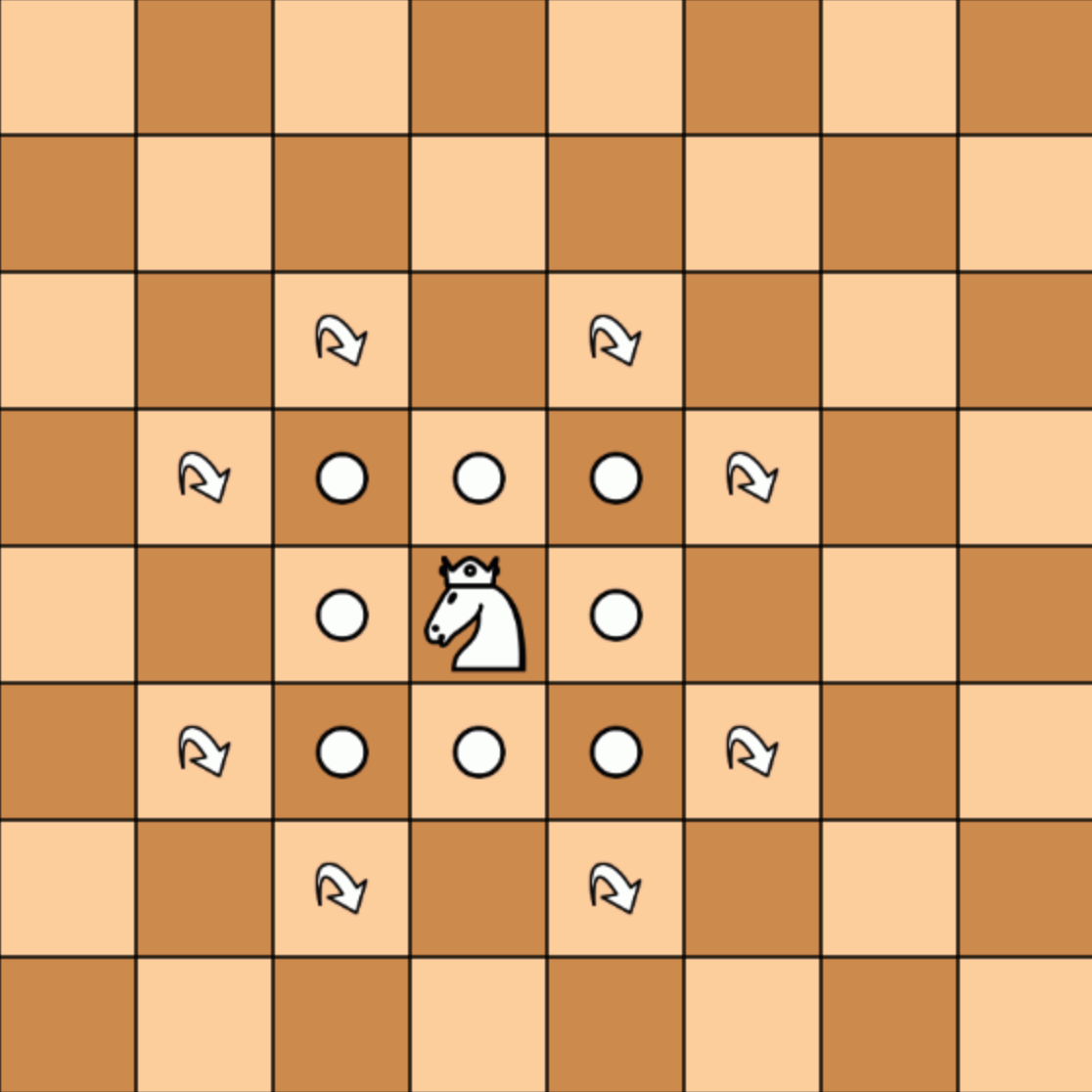
Admiral: it is another compound piece that moves as a Rook or a non-royal King. That means that it is a Rook that can also step one space diagonally. It corresponds to the Dragon King that is found in Shogi.
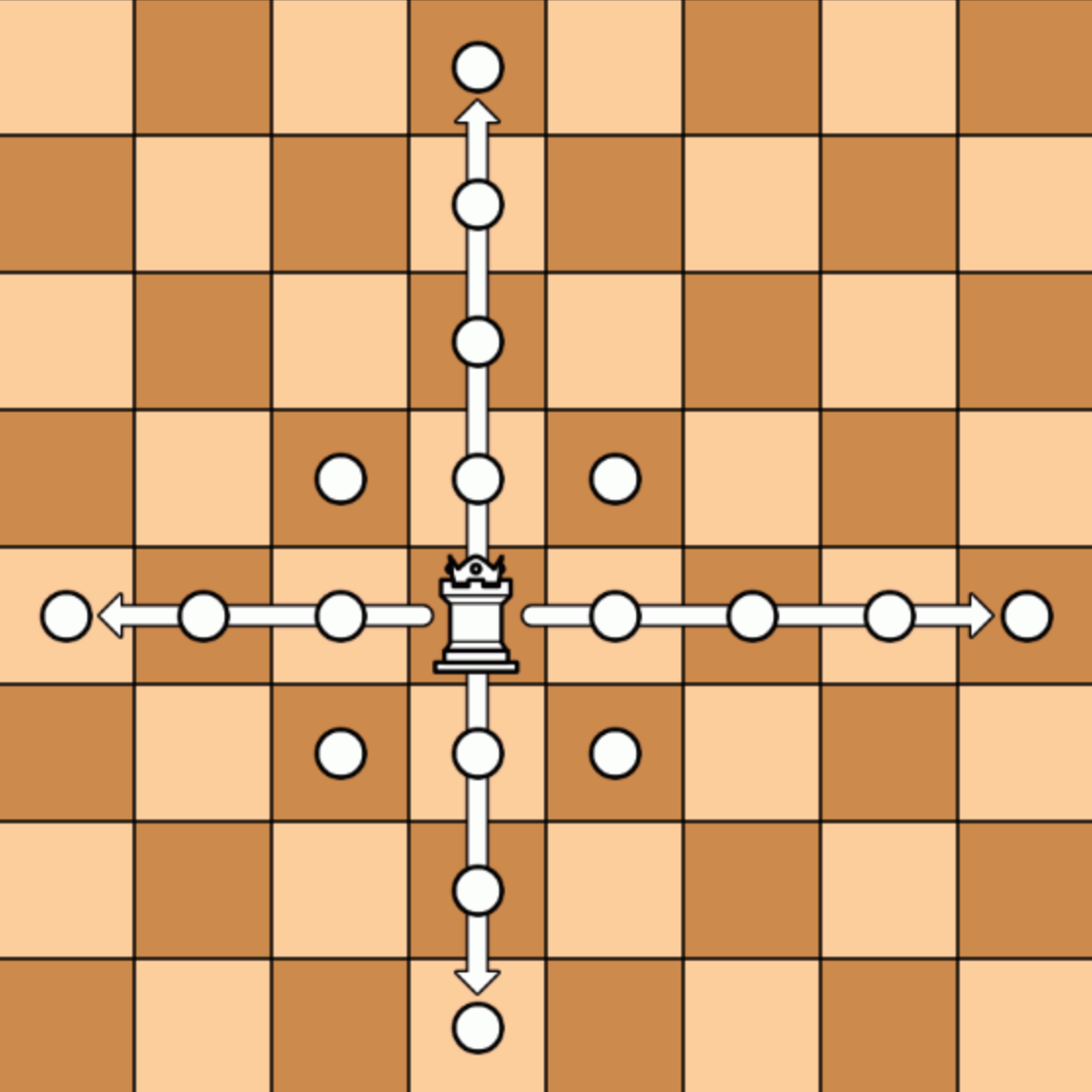
Missionary: it is another compound piece that moves as a Bishop or a non-royal King. That means that it is a Bishop that can also step one space orthogonally. It corresponds to the Dragon Horse that is found in Shogi.
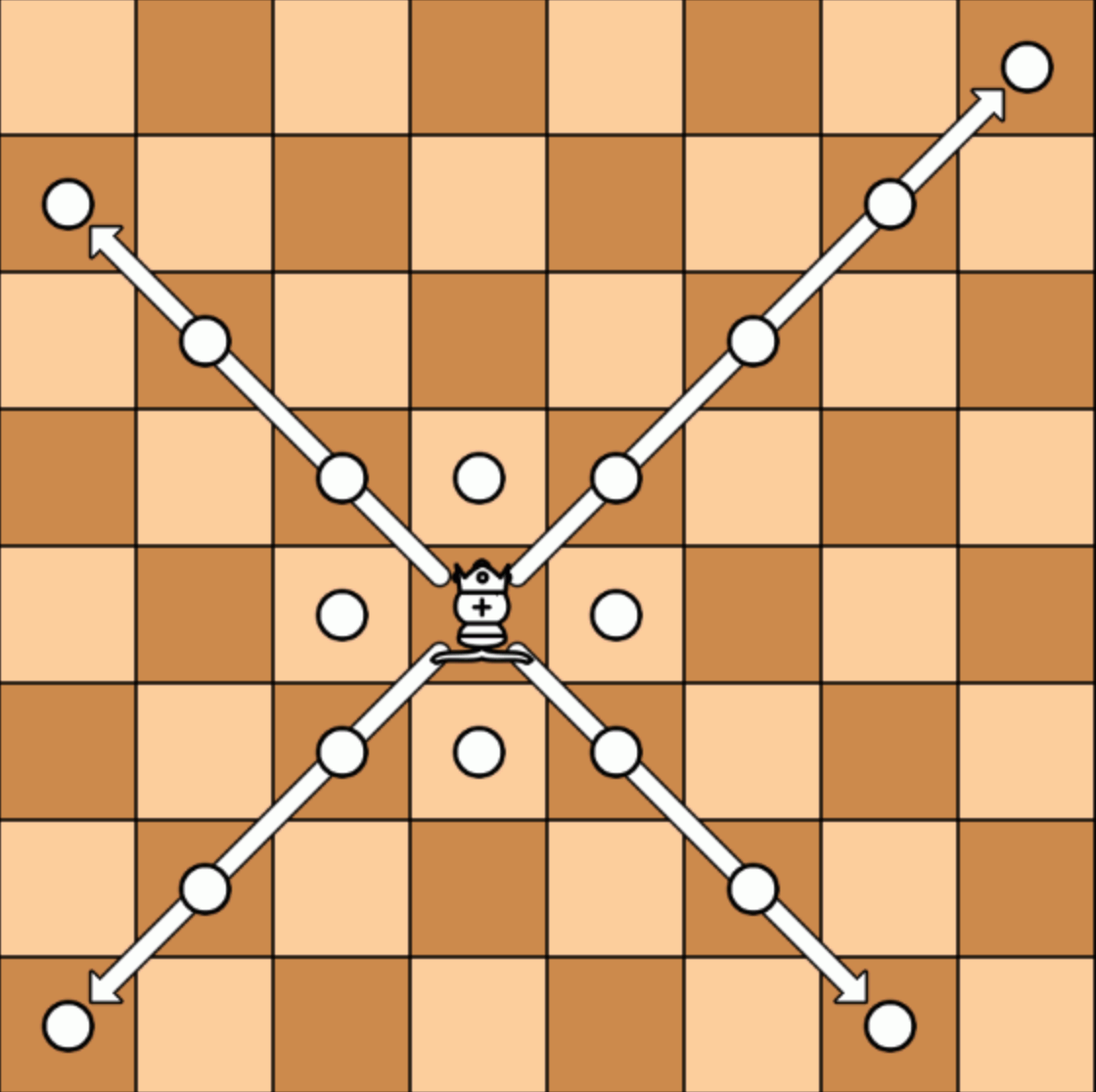
Eagle: moves one square diagonally and then slides away an indefinite number of squares vertically or horizontally. It is authorized to go only one square diagonally. It cannot jump, and the unobstructed path must start with the diagonal movement. This piece is almost as powerful as the Queen and is inspired by the Giraffe from Tamerlane's Chess and the Aanca (a mythical giant bird preying elephants, mistaken for a gryphon) from Alfonso X's Grande Acedrex. Identical to Metamachy.

Rhinoceros: moves one square vertically or horizontally and then slides away an indefinite number of squares diagonally. It is authorized to go only one square along its rank or file. It cannot jump, and the unobstructed path must start with the orthogonal movement. This piece is inspired by the Unicorn of medieval Grande Acedrex. It is a counterpart of the Eagle.

Lion: moves as a King (a single step move in any direction as Wazir or Ferz), or may jump to a position two squares away, jumping in any orthogonal (Dabbaba) or diagonal (Alfil) directions, or jumping as a Knight. (Inspired by Chu Shogi, the most popular variant of the Japanese Chess, where the Lion has the same range but is more dreadful as it can move twice in a turn). Identical to Metamachy.

Camel: a (3,1) jumper, it jumps to the opposite square of a 2x4 rectangle, like an extended Knight. No matter what intermediate squares contain. Note that it always stays on the same color of square. A well known piece from medieval Muslim great Chess like Tamerlane's Chess.

Giraffe: a (3,2) jumper, it jumps to the opposite square of a 3x4 rectangle, like an extended Knight. No matter what intermediate squares contain. Note that it always changes the same color of its square. That piece is found in Alfonso X's Grant Acedrex (but its move has been rendered differently by 20th century historians). The same pattern, but with a non-jumping move, is found in Janggi, Korean Chess, for the Elephant. Under the name of Zebra, it is also a fairy piece used by problemists for compositions.

Buffalo: combines the leaps of the Knight (2,1), the Camel (3,1) and the Giraffe (3,2).

Cannon: exactly as in Xiangqi. The Cannon moves without taking like a Rook, but it takes by going in a straight horizontal or vertical line and jumping over exactly one piece. When a Cannon takes a piece, there must be exactly one piece between the original and final square of the Cannon's move - this piece may be of either color. This is identical to the move of the Cannon in Shako and Metamachy.

Crocodile: it is the diagonal counterpart of the Xiangqi's Cannon. It moves like a Bishop (which was named Crocodile in Grant Acedrex) and needs an intermediate piece between itself and its victim to capture it. The Crocodile jumps the intermediate and takes the victim on its square. The intermediate is left unaffected. (Also known as Vao by problemists).

Machine: it is an orthogonal counterpart of the Elephant as it moves 1 or 2 squares orthogonally, jumping over the first square if it is occupied. Then, it combines the moves of old Dabbaba and Wazir found in ancient Muslim Chess variants. The word Dabbaba designated a siege machine at war in Arabic, hence the name given for this piece.

Elephant: exactly as in Shako and Metamachy. It moves one or two squares diagonally. When an Elephant moves two squares, it doesn't matter what the intermediate square contains. Note that it always stays on the same color of square. The Elephant moves as the combined Alfil and Ferz from Shatranj, two pieces which were also present in mediaeval Chess and have disappeared with the birth of modern moves for the Bishop and the Queen.

Prince: a non-royal King who moves and captures one square in any direction, but without being hindered by check. It has been inspired by medieval games like the Courier chess, an old chess variant, played in Germany, where it is called "Man". Like the Pawn, it can also move without capturing to the second square straight ahead.

Pawn: can move straight forward one or two squares from any position on the board, without capturing. It captures one square diagonally forward. Identical to Metamachy.

Sorceress: it moves like a Queen and needs an intermediate piece between itself and its victim to capture it. The Sorceress jumps the intermediate and takes the victim on its square. The intermediate is left unaffected. Like the Queen is Bishop + Rook, the Sorceress is Cannon + Crocodile.
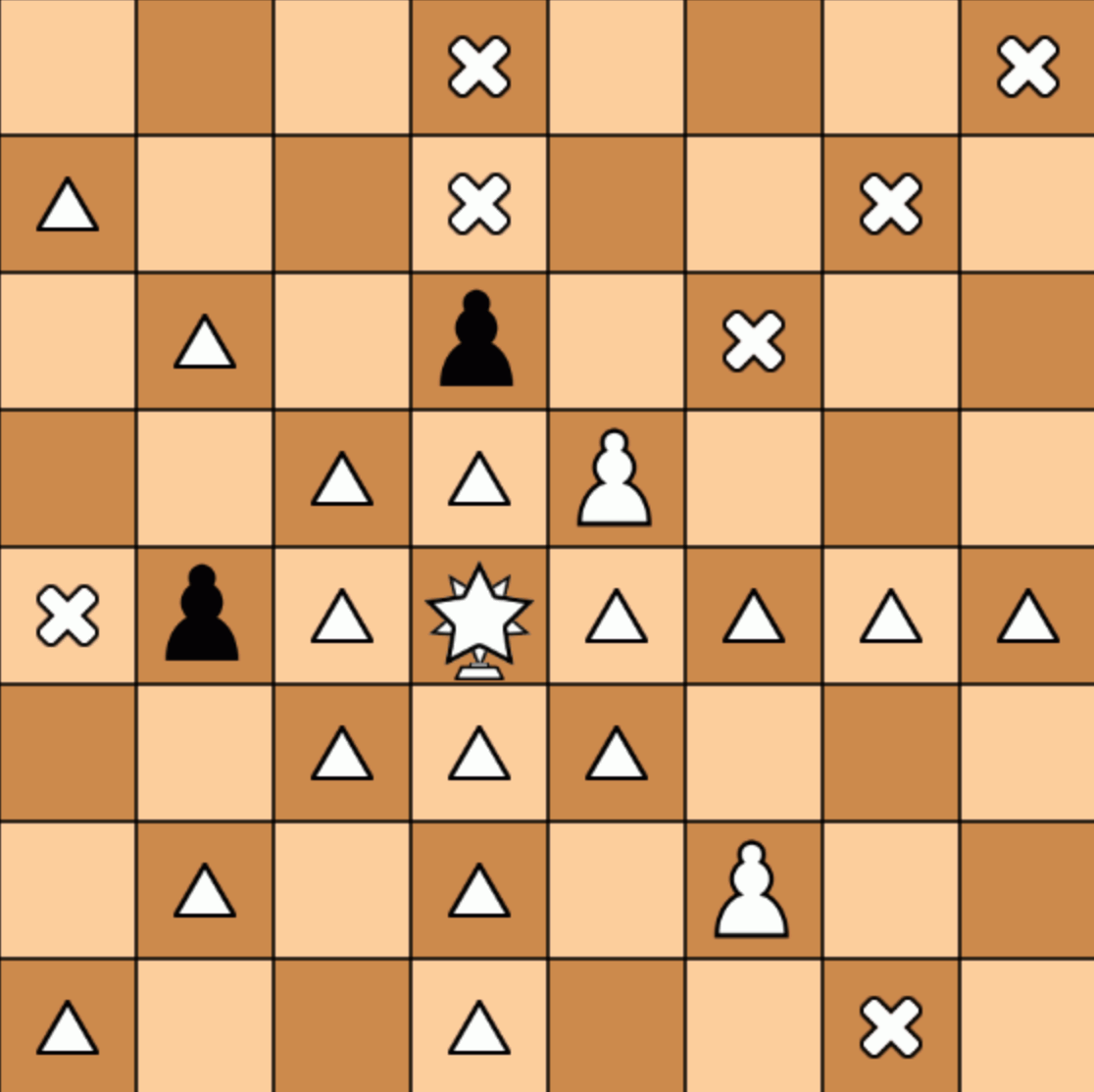
Duchess: it moves as a limited Queen, one, two or three squares in any straight directions. When moving two or three squares, it may jump and it does not matter what any intermediate squares contain.
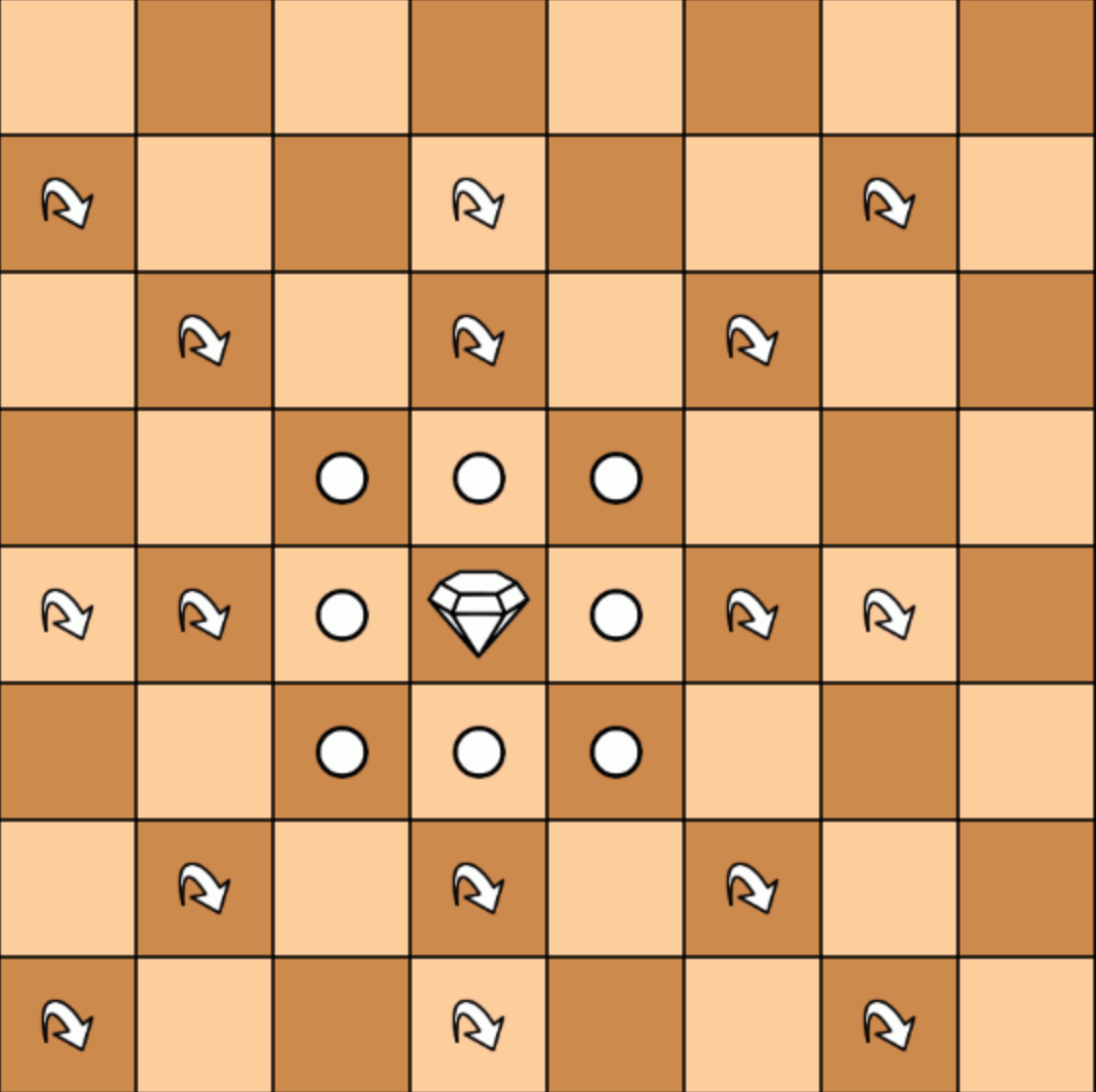
Troll: it makes a 3-step orthogonal or diagonal jump, no matter what any intermediate square contains. In addition, it moves 1 step forward and captures 1 step diagonally forward (like a Pawn). This permits the Troll to reach any square on the board. It can promote only when it moves like a Pawn, never by jumping 3 squares.
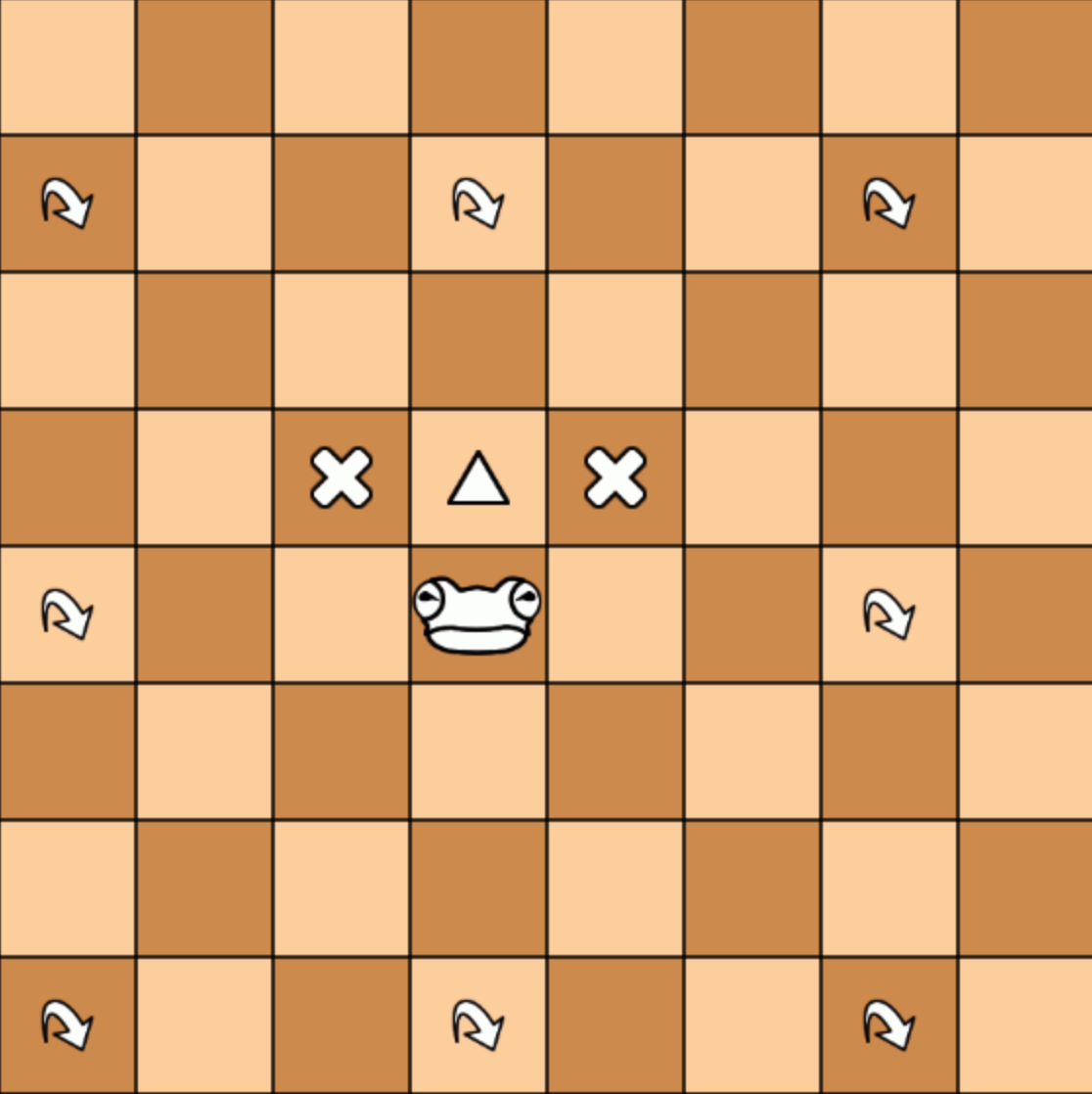
Rules
En passant capture is possible whenever a Pawn, by either by a double or triple step, passes through a square controlled by an opposing Pawn. Apart from this, the Pawn’s rules remain standard.
Castling: the King may castle with either Rook by stepping three squares towards it while the Rook leaps to one square past the King, so that the King and Rook end up adjacent to each other. Restrictions are the same as in chess.
Promotions: not only the Pawns, but several other pieces may be promoted, on entering the last three rows of the board. The Pawn promotes to the Flying Ox, Marquis to Squirrel, Ship to Ostrich, Snake to Osprey, Wizard to Caliph, Wildebeest to Wildeguard, Bishop to Dragon Horse, Rook to Dragon King, Silver Pashtun to Silver Rider and Gold Pashtun to Gold Rider.
Notes
The influence of Japanese shogi and its large variants is obvious. This starts with the promotion zone, which covers all the starting rows of the opponent. The idea of extending the promotion to many non-Pawn pieces is also borrowed from large shogi games. Some pieces come directly from shogi (the Rook and the Bishop promoting to Dragon King and Dragon Horse) or from Chu Shogi (the Flying Ox). The Gold and Silver Pashtuns and Riders are original pieces, not found in historical large shogi variants but evidently inspired by the Gold and Silver Generals found in the Japanese games.
Obento Chess also owes a debt to other chess variants. The Pawn's move is from Omega Chess, and so is the Wizard. The Squirrel, Marquis and Caliph are popular fairy pieces in many variants. The Wildebeest is from the variant of the same name.
But the emblematic pieces of Obento Chess are the different bent-riders. The Ship and the Snake are found in Fantastic XIII. The Osprey is from Expanded Chess but its counterpart, the Ostrich, is original.
More chess variants
Extending this idea, Eric Silverman has designed a full family of giant variants of different size. Given that Obento Chess is named from bento, a meal that the Japanese might take to work or school, he has proposed:
- Hyaben Chess (10x10): from a quick, small bento meal for the busy employee.
- Teishoku Chess (14x14): from a traditional sit-down meal of multiple dishes, eaten at a restaurant.
- Chanko Chess (16x16): from a very hefty meal traditionally eaten by sumo wrestlers. The last game above involves 45 different pieces!
Eric Silverman has coded most of the chess variants that are available to play online on the AI AI platform. That includes all his own games, which may be tested there.
 This 'user submitted' page is a collaboration between the posting user and the Chess Variant Pages. Registered contributors to the Chess Variant Pages have the ability to post their own works, subject to review and editing by the Chess Variant Pages Editorial Staff.
This 'user submitted' page is a collaboration between the posting user and the Chess Variant Pages. Registered contributors to the Chess Variant Pages have the ability to post their own works, subject to review and editing by the Chess Variant Pages Editorial Staff.
Author: Jean-Louis Cazaux. Inventor: Eric Silverman and Jean-Louis Cazaux.
Last revised by Jean-Louis Cazaux.
Web page created: 2022-10-01. Web page last updated: 2023-03-13